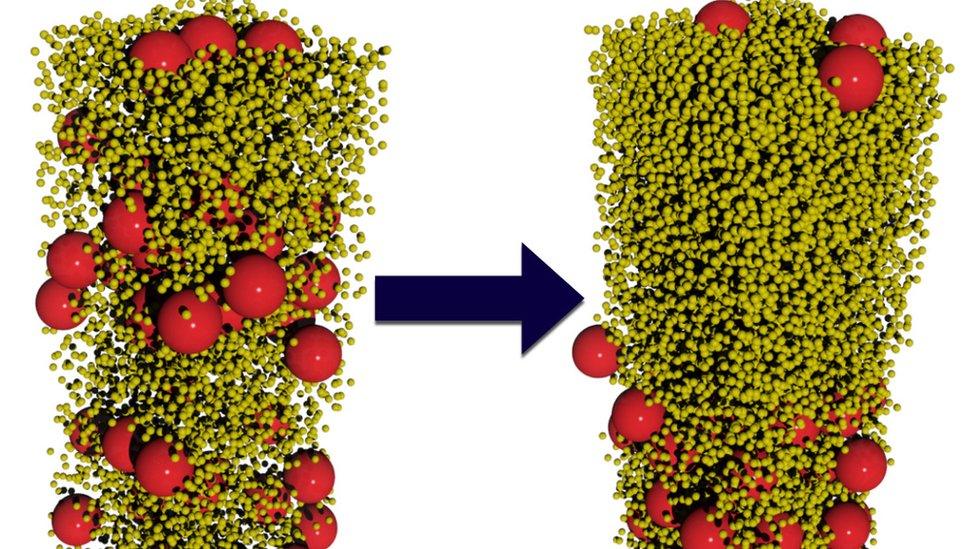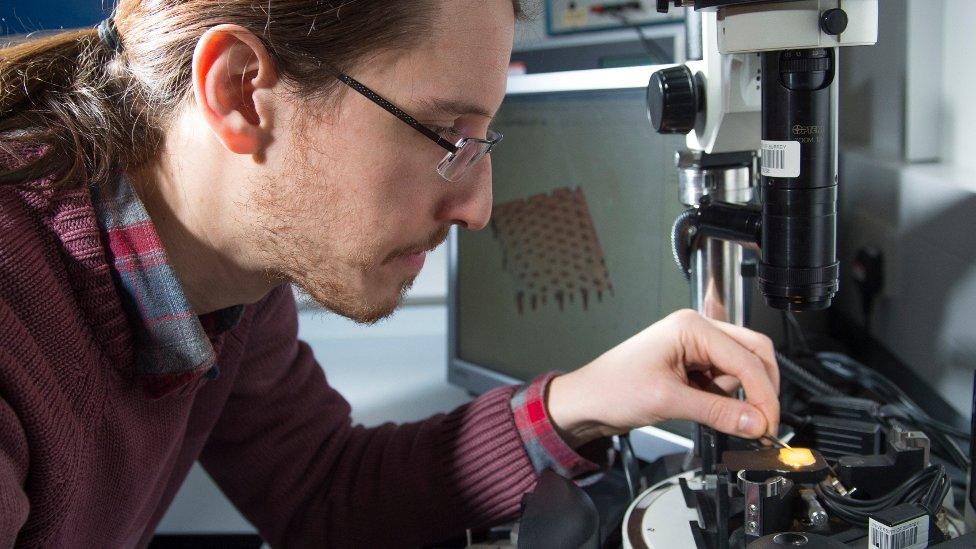Paint drying test boost to nanotech
- Published

Particles divide naturally into layers by size
Scientists have been watching paint dry in experiments they say could improve the performance of everyday items, from sun screen to mobile phones.
What's different about this paint is that some particles are on a nanotech scale, at just one thousandth the width of a human hair.
However, other particles are larger, meaning the paint separates into two layers as it dries.
The "self layering" coatings will be useful in industry, say UK researchers.
"This is literally like watching paint dry because we are looking at polymer colloids, which is the base of most commercial paints and varnishes," said Dr Ignacio Martin-Fabiani of the department of physics at the University of Surrey.
"So literally what we are doing is mixing two different sizes of these latex particles that are used in paints and then we are watching how this blend dries and seeing how the small and the big particles are distributed after the drying of the paint."
Dual properties
The two physicists found that during evaporation, the small particles pushed away the larger ones, so that they naturally separated out into layers.
"We mix these two different types of particles in two different sizes and we see that just by drying we can create a layer of just small particles on top, while all the other particles are at the bottom," lead researcher Dr Andrea Fortini told BBC News.
The physical mechanism, outlined in the journal Physical Review Letters, external, has not been described before.

Co-researcher Nacho Martín-Fabiani preparing a paint sample for analysis with the atomic force microscope
But the experiment could lead to better products used across a range of industries.
In a sun screen, for example, sunlight-blocking particles could be designed to move to the top when applied, leaving the particles that stick to skin underneath.
And a coating for a mobile phone could be developed with dual properties such as scratch-resistance on top and the ability to adhere to glass at the bottom.
The research was carried out in collaboration with the Université Claude Bernard, Lyon, and was funded by the EU project Barrierplus, which aims to reduce environmentally damaging compounds in paints.
Follow Helen on Twitter, external.